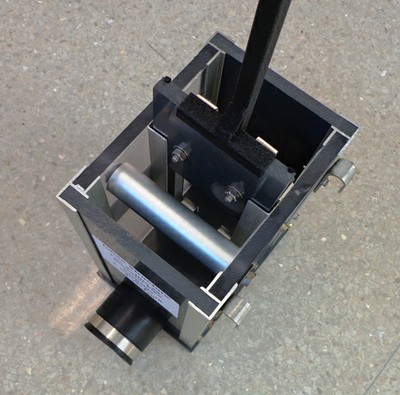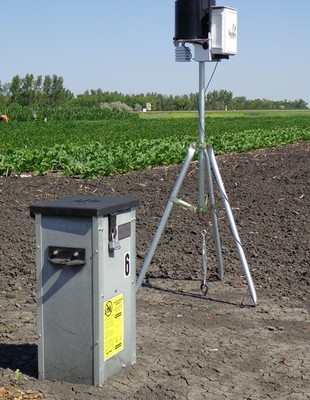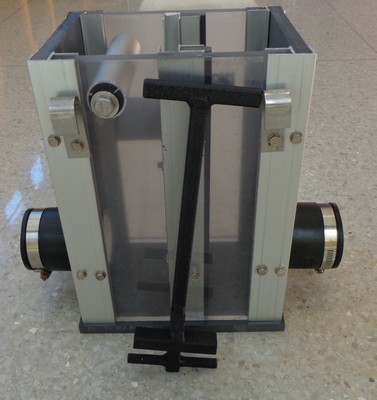Subsurface Water Management
Tile in the Red River Valley
SUBSURFACE WATER MANAGEMENT

In North Dakota, during the past decade we have had several excessive rainfall events prior to and/or during the growing season. One of the management strategies to reduce excess water stress on crops is to install subsurface tile drainage. Tile drainage does not remove plant available water, and normally ensures good and deep root development. However, we do not just need to look at removing water but we should also consider managed drainage (controlled drainage). We should only let water drain when we really do not need it and keep water back in the event of drier weather conditions. In order to manage the water coming out of the tile one needs to have some form of water management structure at the end of the tile line. Photos on the right and (below show a table-top model of a water management/control structure. The actual structure extends from the tile depth to above the ground surface (Photo to the left). Tile on the right comes from the field and the pipe to the left goes to the ditch. In the center of the water management structure there are baffles or panels that can be inserted or removed to raise or lower the water table depth on a portion of the field (Photo on the right).

The water table on the field side of the structure can be managed with these control structures. Under dry conditions, with panels inserted up to some depth above the tile (to perhaps within 24 inches of the field surface) it may be possible, with proper management and favorable rainfall timing, to store more water in the soil profile than would be the case with a conventional (no management structure) tile drainage system. However if wet conditions ensue, the producer has the ability to open the structure and subsurface drain the field. A lift or pumping station is another structure that creates an opportunity to manage the water table, depending on the slope of the field. The pump can either be turned on or off, to stop the water from being drained from the field. The photo below on the right, shows a pump that was still pumping water late in the season. Knowing that there can be a drier period during the second half of the season, I would turn the pump off and monitor the water table in the sump and turn on the pump again when needed. If you have saline soils check the extension publication Managing Saline Soils in North Dakota.


